Fundamentals of graphic drawing.
Types of graphic drawing
In a graphic drawing, especially a linear one, thin and wide lines are also used, but their main difference is that they “live” in drawings - they are drawn by hand, they “build” volume, emphasize shadows, defining the border between light and dark. A line at the same length can have a different thickness. With the help of lines, the number of plans in the figures is outlined, and there are mainly three of them. The foreground closest to us, or rather, the objects in the foreground, I highlight with the help of a thickened line.
With the help of a line drawing, you can depict people, animals, a landscape, and make a sketch of a costume. In a line drawing, only lines of varying thickness are used. The light-air medium is transmitted using continuous, intermittent and smooth lines of various thicknesses. Additionally, a stroke or spot can be used to enhance expressiveness. Linear drawing is distinguished by the transition of lines into thickened spots, typical of the art of Japan and China. It can be done with charcoal, sauce, sanguine, soft graphite pencils! Linear drawing is especially appropriate in sketches and sketches.
In addition to the linear graphic pattern, one should include a planar decorative one (performed by spots of any tone) and a volumetric shadow light (performed also with the help of spots that build volume, or a stroke of various thicknesses). Decorative drawing is performed sequentially, filling the spots with ink or gouache, as well as any soft materials! It is used in posters, costume sketches, i.e., where graphic clarity is needed to identify a specific theme or form.
In a black and white drawing, the form is built with the help of strokes, with gradation from the darkest to the lightest.
The stroke technique has its own characteristics. The stroke is applied in the drawing in different directions, but preferably in the form of objects, without violating the integrity of their perception, i.e. the stroke should not “tear”, “crush” the form. The dashed lines can be located close to each other and far, at any distance from one another, while you can increase or decrease the pressure of the pencil.
The black and white pattern is rich in all sorts of tone transitions; The richness of the pictorial techniques of such a drawing attracted and still attracts artists.
In addition to the linear graphic pattern, one should include a planar decorative one (performed by spots of any tone) and a volumetric shadow light (performed also with the help of spots that build volume, or a stroke of various thicknesses).
Decorative drawing is performed sequentially, filling the spots with ink or gouache, as well as any soft materials! It is used in posters, costume sketches, i.e., where graphic clarity is needed to identify a specific theme or form.
In a black and white drawing, the shape is built using stroked spots, with gradation from the darkest to the lightest.
The stroke technique has its own characteristics. The stroke is applied in the drawing in different directions, but preferably in the form of objects, without violating the integrity of their perception, i.e. the stroke should not “tear”, “crush” the form. The dashed lines can be located close to each other and far, at any distance from one another, while you can increase or decrease the pressure of the pencil.
The black and white pattern is rich in all sorts of tone transitions; The richness of the pictorial techniques of such a drawing attracted and still attracts artists.
Techniques for drawing geometric bodies
When drawing the simplest objects, you need to train your hand and learn, firstly, how to hold a pencil correctly, and secondly, how to correctly execute a stroke, simple and broken lines. Tone solutions in the drawing
Work on a black and white pattern is inextricably linked with finding the right tonal solution. Even with the image of one-color gypsum, we observe differences between a few light penumbra and the darkness of the surrounding objects. The same objects, placed in the light and against the light, have a different tone. By tone, we mean luminosity.
Pencil on paper cannot convey the bright light of the sun on a white wall and deep shadows on black velvet. Smaller contrasts are possible in the drawing than in nature. For the veracity of the image, it is necessary to correctly maintain the sequence of the ratio of all the tonalities of nature from the darkest to the lightest. The tonalities are conveyed by many gray shades intermediate between the tone of paper and the tone of a pencil.
Using closer tonal ratios to depict sharper contrasts in nature, one can show the sparkle of snow and the depth of shadows. Tones also change depending on the Distance to the subject of the image: when removed, they lose contrast, shadows appear lighter, bright lights are dimmer. This is due to insufficient air transparency.
The concept of "tone" means the transfer in the picture not only of chiaroscuro, but also differences in the color of objects in terms of lightness. Any mistake in tone violates spatial plans.
With a tonal solution, it is impossible to compare the tone of any one place in the drawing with the tone of the same area of nature (such drawing "point-blank" can give rise to many errors), it is necessary to analyze several tones at once, i.e., to create certain relationships between tones both in nature and in the drawing. This correctly helps convey the tonal scale.
The distribution of chiaroscuro on the surface of objects is conveyed using tone transitions from light to dark: highlight, light, penumbra, own shadow, falling shadow, reflex. The lightest spot or band on an object is called a highlight. This is the reflection of a light source on a polished or glossy surface of an object. It differs from light in greater lightness.
The light evenly passes into the penumbra and, thickening, turns into a shadow that is on the subject. There is also a drop shadow that an object casts on the plane of a table, board, wall, etc. The size of the drop shadow depends on the light source, its distance from the ground or to the plane on which the object stands. Many have noticed that objects, trees, buildings that the sun illuminates at different times of the year or even during the day cast their shadows in different ways. In winter, when the sun shines on the trees, the houses are somewhat to the side, the shadows from the trees are long, and in the summer, when the sun is at its zenith, the shadows are short.
If the items have a different material texture, then the tone color will also be very different when compared. When drawing objects different in tone, it is not necessary to take black as black, it is important to observe the conditional tonal ratios taken one to another. When designing a shadow, you need to remember that even in this case the paper should shine through, and try not to blacken the drawing too much, that is, do not make the shadow black, but only darker in tone.
Checking the correctness of the drawing
Drawing, the student must constantly check his work: the correct layout, the design of the construction of objects, the observance of proportions between nature and the image. In addition to the fact that the drawing during work must be set aside for verification at a distance equal to approximately three parts of the length of the size of the nature, it can be directly placed to the nature itself and checked, comparing with nature, from the place from which the drawing proceeded. The drawing is set aside in any direction, as long as it
To control the correctness of the drawing in another way, you can take a mirror and, placing the drawing parallel to its plane, look at your work - you will get a reverse image in the mirror, and the slightest misses will be clearly visible.
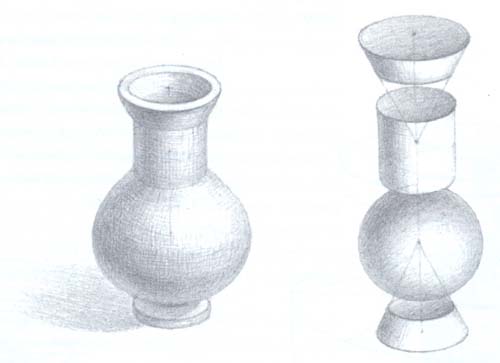
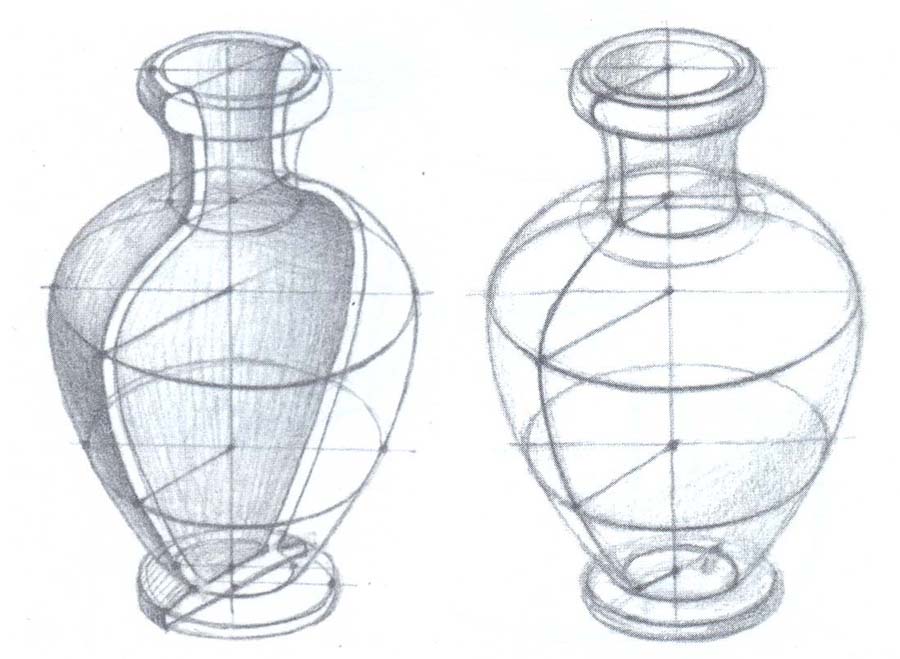
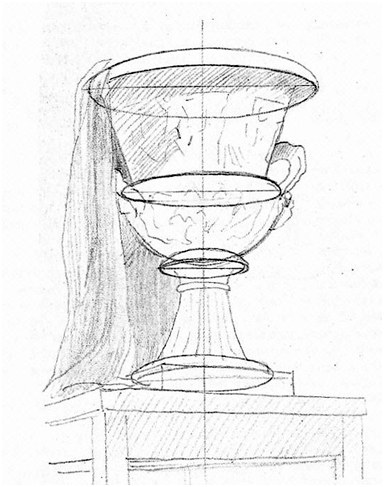
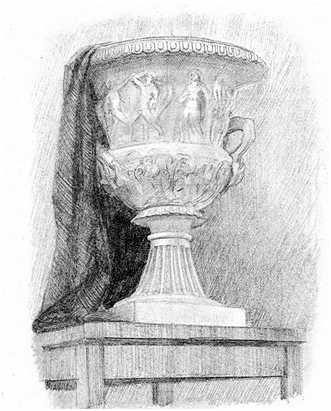 Drawing geometric bodies and a plaster vase
Drawing geometric bodies and a plaster vase
Drawing a cylinder standing on a horizontal plane 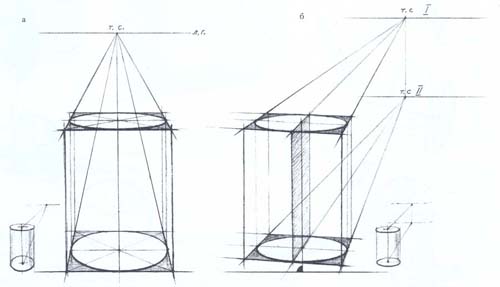
The drawing of the cylinder begins with the bottom base lying on the plane of the table. Since it represents an ellipse, the dimensions of the major and minor axes are compared. When drawing a lying lower ellipse, it is necessary to depict it with smooth transitions. The perpendiculars of the ellipse are restored to the major axis and the height of the cylinder is noted. The upper base of the cylinder is also an ellipse, but its dimensions decrease in comparison with the lower one, so it approaches the horizon line and turns into lines on it. The three-dimensional shape of the cylinder is emphasized by shading according to the shapes, separating the falling shadows from the object. Drawing a cylinder lying on a horizontal plane
A cylinder lying on a plane can be located strictly frontally to the drawing one or at a random angle of view, the frontal position is simpler, so let's take a closer look at the position at a random angle of view. The instability of the cylinder in this position is easily explained: it lies on the table with a round cylindrical surface, in contact with it, and it rests on one straight line - generatrix. The cylinder is built on the basis of a rectangular prism in which it can be inscribed. In this case, the side of the base will be equal vertically to the diameter of the circle of the base of the cylinder. Having built the axes of symmetry, the ellipses of the bases are driven and the cylinder is finally built. The stroke emphasizes the shape of the cylinder and the falling shadows.
Drawing a group of geometric bodies
The first stage is to find the most successful arrangement of a group of objects on a sheet, that is, the ratio of the width and height of the entire group at once, and then each object; separately. Outlining the main proportions of the overall composition, it is necessary to include falling shadows and the remaining voids of the sheet.
The entire drawing is done with light lines, using auxiliary lines to build objects on a plane and in perspective reduction. They draw as if all objects shine through one through the other. In the setting, one object can cover another in different ways, so it is necessary to find an expressive turn of one object to another. Everyone decides the composition in his own way, while one or another object will be the main one. All transparent auxiliary faces are needed to check the position of objects in space. Having outlined the composition of the sheet, they indicate the bases of objects that are directly on the plane of the table.
The second stage includes the constructive construction and elaboration of the shape of objects. With light hatching, partial shade is applied, a darker tone is left for shadows - own and falling. For better detection of white gypsum, the background of a wall, board or table is outlined. The illuminated part of the plaster is left white, unshaded.
At the third stage of drawing, they continue to work on chiaroscuro, revealing all the halftones and reflexes, generalizing, if possible, some parts. At the same time, it is necessary to look in front of you into space for the entire production at once, covering more shadows, leaving more tone strength in reserve for the final completion of the work.
The fourth stage is the generalization of the drawing, its final revision. At this stage, it is already difficult to correct anything in the constructive construction, therefore, they mainly check the strength of the tonal relations of the drawing and staging, the subordination of minor details in tone to the whole, that is, they work only with chiaroscuro. Since it is impossible to rebuild the design of objects or correct their position in space and relative to each other, it is necessary to strictly observe the sequence of these four stages of drawing.
A vase, in comparison with geometric bodies, represents more complex shape, although it consists of relatively simple parts. Its middle part is the main one and is an ovoid shape resembling a ball. The lower part - the stand - consists of two strongly shortened cylinders, and the lower one is cone-shaped. The upper part of the vase is relatively low, in the form of a truncated cone, to which is attached a shape resembling a plate. The transfer of all these proportional relationships is the main task of the drawing.
When drawing a vase, the principle of symmetrical construction is applied. The vertical axis of symmetry passes through the center of the vase, on which the height is plotted in the form of an arbitrary segment, the distance from the edge is less on top than on the bottom, in order to then draw falling shadows on the table and the surface of the table.
Next, they outline the horizon line, or the eye level of the painter (for a standing person, the eye level will be higher than for a sitting one), and determine the ratio of the height of the vase to the width. To do this, from the central axis at the level of the widest place, lay in both directions in the form of equal segments the entire width of the vase. Having outlined the width at all levels, they begin to build a vase. It must be remembered that all cross sections of the vase are circles, and in perspective - ellipses.
At the level of the horizon line, the ellipse is depicted as a straight line, below or above the horizon line - in the form of ellipses from narrow to a circle when viewed from above or below. It is important to set the dimensions of the ellipses in the drawing: if the vase is directly in front of us, the ellipse of the upper base will be narrower than the lower one. After checking again all the proportions, connect the segments, outlining the overall shape of the vase.
After that, they proceed to the transfer of volume by chiaroscuro. It should be remembered that any line in a black and white drawing is the border between light and dark, i.e., there should be practically no lines left in the finished drawing. All unlit places are covered with a stroke, which is applied according to the shape, falling shadows are outlined, while leaving the lightest and darkest places in the production.
The final stage is the generalization of the drawing. With the help of a pencil and an eraser, excessive fragmentation is removed, shadows are softened, highlighting reflexes and illuminated places. Reflex - reflected and therefore weakened light refers to the shadow and shows the nature of the surface of the form in its shadow part.
By drawing a vase, they consolidate their knowledge of perspective, learn to depict rounded objects, analyze any complex shape, and also combine different shapes into a single whole.
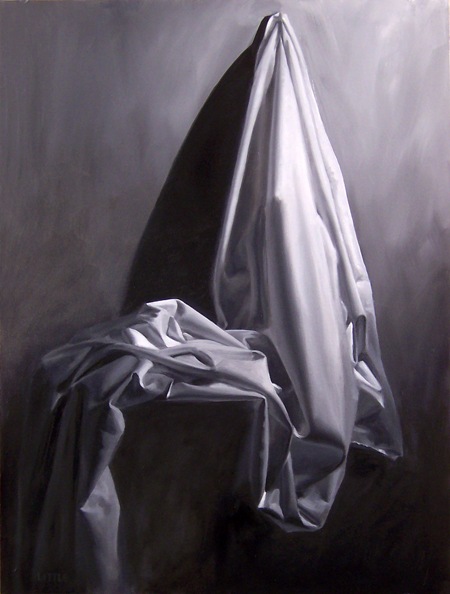 Drawing draperies and folds on fabrics
Drawing draperies and folds on fabrics
The fabric itself is a plane, a flat surface that has no shape. Only by fitting any object or figure of a person, it can descend in the form of folds, turning either the front or the wrong side. Drawing helps to study the properties of fabrics.
Any fabric, depending on the lines and shapes holding it at certain reference points, forms folds. More complex folds are called draperies. Pleats and draperies can be of various shapes.
The shape of the folds depends on what object it is thrown over, and the direction of the folds depends on these shapes.
The shape of the human body is similar to geometric figures- cylinder, ball Before studying draperies on a human figure, one can examine them by throwing the fabric over a ball, cylinder, cone, etc., determining the patterns of fold formation. In the fabric thrown onto the surface of the table, chair, its plastic properties are clearly manifested. Kinks, kinks and folds form, depending on the softness, fluidity or, conversely, the stiffness of the fabric, i.e. its structure. Thus, the folds on gauze are very different from the folds on velvet, brocade or cloth, as well as on silk or chintz. Comparison of two fabrics is possible according to the principle of contrast - light or heavy, matte or shiny, hard or soft, dense or sparse structure, etc.
Giving figurative and precise characteristics to the fabric, it can not be called soft, flowing; hard, sticking out; heavy with large folds; light airy, transparent or elastic, lethargic, etc.
The drapery pattern is carried out in four stages:
1 - we outline the composition of the picture in the form of a sketch with thin threads.
2 - we outline the main proportions of the entire mass of the fabric, denoting large and minor folds.
3 - easily shade all darkened places.
4 - finishing the drawing, we apply all the halftones, emphasizing the shadows, highlighting the main folds.
A pattern or pattern of a fabric (a cage, a strip, a floral ornament, etc.) when drawing draperies is depicted on the relief of folds.
You can sketch and sketch fabrics (smooth and patterned) with a variety of materials suitable for the selected fabric. Light, transparent fabrics can be depicted in watercolor, ink, pen, charcoal; hard, protruding - ink, filling the spots and emphasizing the breaks with a pen; soft, fleecy, heavy - sanguine, sauce, etc.
Scheme for constructing folds of various configurations:
We outline a rectangle, triangle or any other shape that this piece of fabric has;
we draw a line limiting the width of the fold at the bottom, we draw the ratio of the zigzag height and the width of the fabric to the zigzag contour of the bends of the fabrics;
we build the contours of the bends of the folds, paying attention to the parallelism individual elements zigzag and smooth curves of lines;
we outline the vertical contours and the lower contour of the folds (the construction of the contours of the top must correspond to the construction of the contours of the bottom);
after drawing the contours, we conditionally determine the direction of the light falling on the folds of the fabric, and in accordance with this, we outline lighter and darker planes on the surface of the folds;
creating the illusion of volume with the help of light and shadow, we shade all the shadow places.
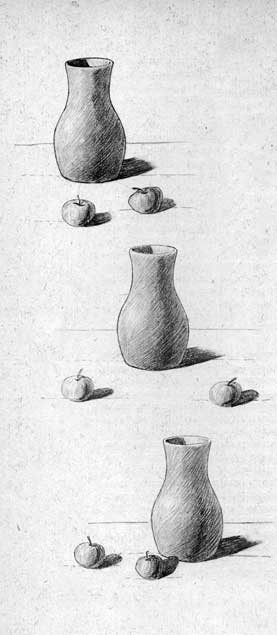 still life drawing
still life drawing
Still life from the French nature mort - dead nature. In contrast
drawing living nature, a still life is composed and depicted to study the properties of inanimate nature, the design features of individual objects, as well as to study the textural and plastic properties of various materials.
As an independent genre in art, still life appeared at the turn of the 16th-17th centuries. in Holland and Flanders and has since been used by many artists to convey the direct connection of art with the life and life of people.
The perception of a still life cannot be unambiguous.
Drawing up a still life involves the ability to depict the shape of various objects using chiaroscuro, perspective, color laws.
The basis for drawing up a still life is such a selection of objects in which the general content and theme of it are most clearly expressed.
You must first draw a still life from two or three objects in order to better express all their plastic properties, choosing a certain point of view, i.e. horizon line.
One of the objects should become the compositional center of the production and stand out in size and tone. It should be placed closer to the middle of the setting, and to give the setting dynamism (movement of spots), it can be moved to the right or left.
With the spatial solution of a still life, a small object that differs in texture and color from other objects can be put in the foreground as an accent. To complete the composition, as well as to connect all objects into a single whole, draperies are added to the production, thus emphasizing the difference between solid objects and the soft flowing texture of the fabric. fabric can
be smooth and with a pattern or design, but it should not distract attention from other, especially the main subjects. It is often placed diagonally to direct the viewer's gaze in depth, towards the compositional center for a better spatial solution.
An important role in the composition of the setting of a still life is played by lighting - artificial or natural. Light can be lateral, directional or diffused.
First, preliminary sketches are made on small sheet formats of various shapes - square, elongated in height, laid horizontally. Having chosen the most successful of the sketches, you can proceed directly to drawing.
Having marked the still life on a sheet, you need to follow the perspective construction, as well as convey the volume with the help of light and shade, subordinating all the details to the general tonal solution so that the result is not a set of individual objects, but a whole composition. It is important to learn to see this whole, and the details will be assimilated gradually in the process of work.
Even if the most famous paintings in our entire history are painted with paints, you should not forget about such an important component visual arts in human life, like graphics.
About graphics in general
She has always been close to painting, appearing in individual works, along with paints and as a basis for their overlay. There are quite a lot of its types, well-known and not too well-known, and a large number of artists of all times and peoples turned to graphics in an effort to express themselves.
For charts the main visual means are a variety of lines, dots, spots, strokes and tone, which together and even separately create an integral image. Color for this type of art is not the main thing, although it is quite an acceptable phenomenon. Usually, in addition to the main black, only one color is used in graphics, although sometimes (for example, in engravings) a fairly large variety of colors can be used. Due to the dominant color restraint, this art form is sometimes also called the art of black and white..
Different types of graphics and her techniques appeared gradually, not immediately. The first images, as we remember from history lessons at school, are drawings on the walls of caves and stones that remained from primitive people. Further, ornaments appeared on weapons, household items and tools that came from the Neolithic and Bronze Ages. At these early stages, art also combined the function of writing - the transmission of information. Preserved to our time, and parchment scrolls, and stone slabs, and clay tablets used as a source of information. The ancient Egyptians succeeded in combining writing and graphics - they used pictograms (drawings denoting various objects, actions and subjects) with might and main to display their history.
History of graphics
For a long period, graphics served only to decorate objects, easel graphics was not, and the connection with writing was preserved thanks to the decoration of books, like everything else at that time - only self made. China, for example, did not distinguish between drawing and calligraphy, they were considered equal and complementary. And in 868 AD. in the same place, a method was invented to increase the number of copies of a drawing using a cliché carved from wood. This was the beginning of woodcuts - woodcuts, which appeared in Europe only in the first half of the 15th century. And to this day in Asia you can see craftsmen carving hieroglyphs or name seals on a wooden bar.
Initially, only writing, the art of fonts, was called graphics. Only at the turn of the 19th-20th centuries did it take shape as an independent form of fine art. It is interesting to note that the modern museum classification also refers to graphics all techniques using paper and water-soluble paints (mainly watercolors, pastels and gouache). But here it all depends on what the artist is inclined to - to color or lines.
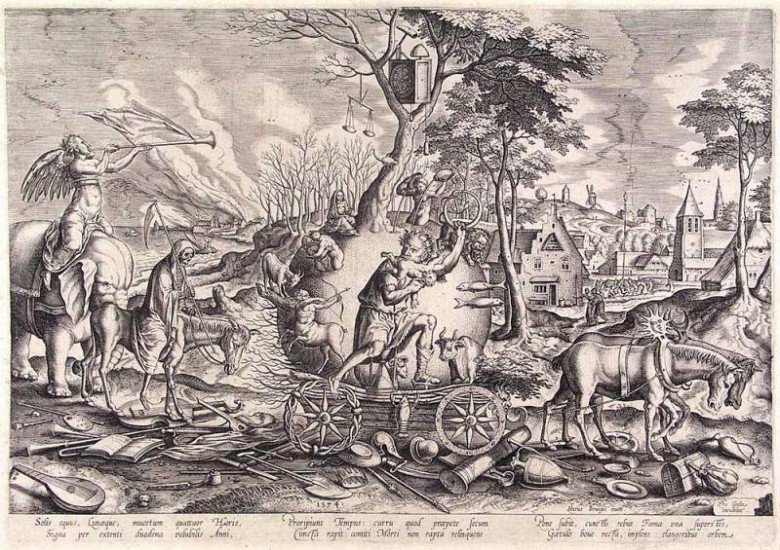
It is believed that graphics attract with their conciseness, rigor and capacity of images, combined with some uncertainty and understatement, conventionality, which makes the viewer's imagination work more actively. That is why artistic value as works of art also have sketches, sketches, sketches - seemingly unfinished paintings, but also independent paintings.
Magnificent examples of graphics can be seen in Leonardo da Vinci, Michelangelo Buonarroti, Albrecht Dürer, Rembrandt van Rein, Ivan Shishkin, Taras Shevchenko and many, many other artists also known for their painting.
The traditional basis for graphic drawings there was and still is paper - most often white, but, depending on the artist's idea, also colored, sometimes black or textured. Such a background seems to create its own space in which the depicted "lives" - two-dimensional or three-dimensional only thanks to the imagination and skill of the author. But here, for example, the portrait of Chaliapin by Serov was created with charcoal on canvas, and primitive graphics have come down to us on stone, so there are no special restrictions. You can add, however, polymer films and foil as a basis for drawing materials.
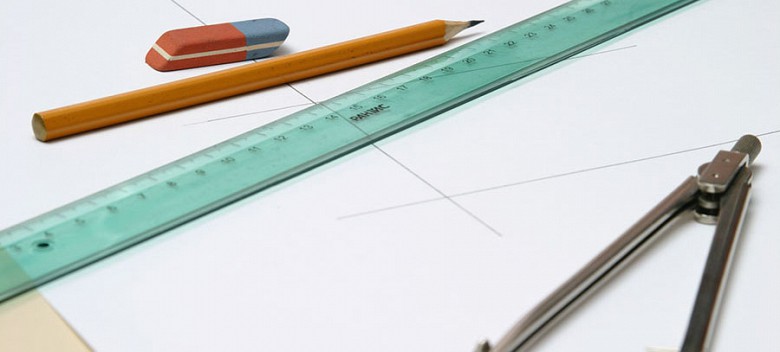
From the traditional tools of the creator of graphic works, one can name a graphite pencil, ballpoint pen, charcoal and others like them. But for some types of graphics, printing presses, wood / linoleum cutters, lithographic stones are needed - something that is not found everywhere.
In general, various pencils, brushes, steel, goose and reed pens, wooden, glass and reed sticks, fountain pens and felt-tip pens, tubes are used. different forms(glass or metal), spray guns, airbrushes, as well as the whole variety of shading, tampons and rollers. What do these tools do? Watercolor, ink, ink, gouache, tempera, typographical, oil and synthetic paints, various varnishes, dyes for textiles. In addition to these materials, charcoal, stick and powder pencils, and pastels are also used.

Varieties of graphics
Graphics are varied. It is traditionally divided into easel (like painting), book (illustrations and other design of the publication) and newspaper and magazine (drawings, cartoons) and applied graphics (stamps, labels, envelope design, poster, poster and much more). The youngest species is computer graphics, but it is not directly related to the materials used by other species, and therefore stands aside.
All genres are used in graphics- after all, it allows you to detail, and blur, and hint at the object, and fully convey the world (especially in the genre of hyperrealism that is popular today). In addition, there are also different techniques. First of all, you need to name the drawing (no matter what and on what, even if printed). Another option is a print - an author's drawing intended for replication, that is, printing. It includes engravings on wood (xylography), metal, linoleum, cardboard, glass and stone (lithography).
As already mentioned, a certain time the term " graphic arts” denoted only writing and calligraphy, however, after the appearance of drawings in books, and after them the drawing went beyond books, the area covered by the term also expanded. With the development of industry, an increase in education and the number of printed publications (both books and periodicals), industrial printing also developed, spreading graphic drawing and helping to develop graphics as an art.
At first, graphics was understood as the art of line based on the contrast between black and white, but over time, this understanding expanded, adding such concepts as stroke, spot, dot, tone to the definition. To date, the development of graphics does not stop, as well as the development of painting in general. There are new genres, techniques and, of course, new works in these styles, which we will talk about in the next article.
Many aspiring artists dream of learning how to draw portraits with a pencil. It's quite new level in creativity. Having learned to portray a portrait of a person, it will be possible to easily master the watercolor technique, draw with sanguine and charcoal, as well as oil. You must start with Confidently manipulating graphic materials, you can achieve an incredible resemblance to nature.
How to draw a graphic portrait
To draw it, you will need:
- Tablet covered with whatman paper.
- Measuring device (ruler).
- Simple pencils of various hardness.
- Eraser.
To represent quality graphic portrait, try to reduce the use of the eraser to a minimum, as it overwrites the paper, because of this, dirt forms on the drawing. After the materials are prepared, the sheet is stretched, we can get to work.
Draw a portrait
We analyze our nature, carefully study it from each side in order to understand the features and form. It is advisable to make preliminary constructive sketches in order to understand the forms and understand them. Nature needs to be drawn from each side, this will allow you to understand its shape, study its features and each detail separately. 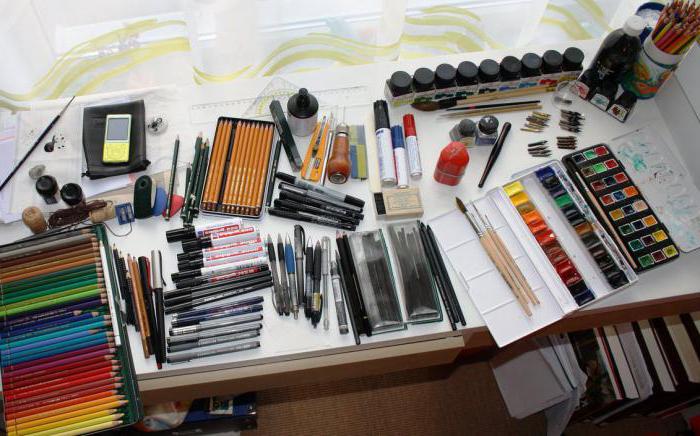
How to draw a graphic portrait in stages
We are located on the spot the best view preparing materials. Nature must be static. We begin to draw a graphic portrait in stages:
- First you need to make a layout on the sheet.
- We outline the individual parts of the image in general terms.
- We find the rotation and axes of construction.
- We begin to build a form, alternating from general to small details.
- At each of the previous stages, it is necessary to carefully compare the image with nature, check for proportional ratios shapes and perspective abbreviations.
- This stage is hatching. After the construction is completed, you need to start applying a stroke, you need to do this carefully and slowly dividing the drawing into shadow and illuminated parts.
- We put a touch on the form, thereby giving volume to the portrait, but do not forget about the generality and get hung up on any one detail.
To make portraits with a pencil, you need to analyze and understand your mistakes. Usually novice artists put too much pressure on the pencil from inexperience. Because of this, the work turns out to be overdrawn, that is, the lines are too sharp. The drawing should not be outlined with a black line, it should harmoniously fit into the format and convey the forms.
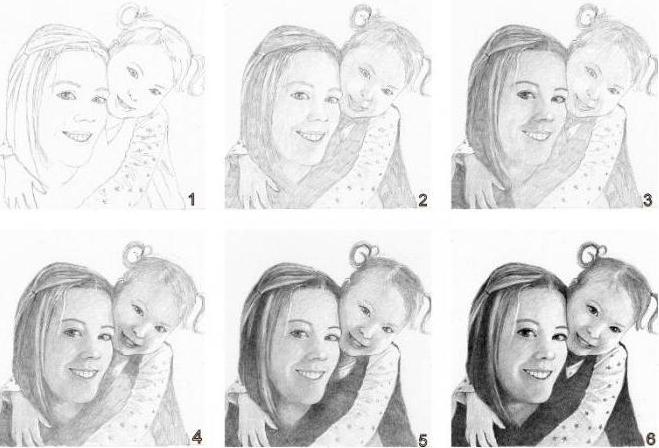
Common Mistakes
In an attempt to convey volumes, the artist is too keen on small details, working hard on them. As a result, the image ceases to be complete. Even a novice artist notices this himself.
Sometimes the problem is that the artist cannot understand how the details that he seeks to work out are arranged. As a result, it is not possible to detail the image, hence the fragmentation in the drawing arises, it is also possible to violate perspective relationships, many try to make the work complete, at least due to tonal study. Working on a particular detail and making mistakes in it, the draftsman tries to connect it with the general form, superimposes layers of graphite one after another. And in the end, he remains disappointed with the result. But in order to draw a high-quality portrait of a person, it is enough to study every detail well.
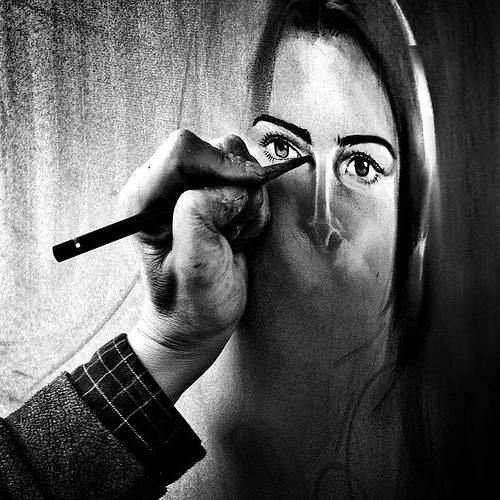
Analysis of shortcomings
If the artist is faced with the problems described above, then he needs to take into account the following: after a constructive analysis, the forms came with the help of hatching, and at this stage some doubts about the continuation of work on the image often begin to disturb.
Stop parsing tones and repeat parsing shapes. Go over the shape with a pencil, disassemble the nature on a plane and remember its design. After such a detailed analysis, drawing becomes much easier.
Imagine in your mind what detail comes from where, how the volume is formed and why this happens. This mental process helps to understand how to distribute the chiaroscuro, which area will be immersed in the shadow, where the penumbra is located and where the light falls. 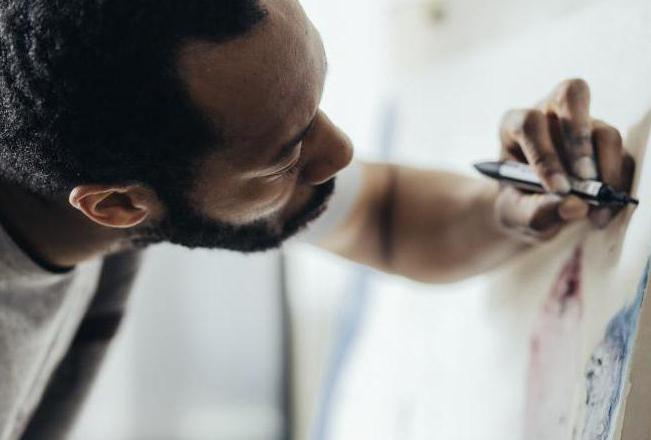
Eliminate bugs step by step
If you encounter difficulties in working with the form, you should do this:
- We visually divide the form into several planes that create its volume.
- We analyze how the form is arranged, then build it using conditional planes or using constructive lines, you can combine all the methods together.
- If none of the methods helped, you need to generalize the drawing. It is necessary to collect all the small details together using conditional planes.
How to improve a skill
In order for the hand and eye to get used to drawing, it is necessary to make sketches every day that help to understand nature and improve your skill. Try to capture the volumes of nature, as well as planes and proportions. Make sketches from nature regularly. You can watch TV and try to capture the pictures you see on the screen. Keep a pen and sketchbook handy at all times. Draw everything you see, take the necessary equipment and make sketches in the subway and train stations, where there is a huge crowd of people. Practice the skill every day, compare ratios and volumes. To do this, you can use photographs or drawings from books. Learn to focus on general forms and don't get hung up on the little things. This is the only way to improve your skills.
Zentangle & Doodling / Zentangle and Doodling. Step by step drawingYou will need paper, a simple pencil and eraser, capillary pens different colors, well, and ... the desire to draw, of course.
There is no special concept in my drawings initially. I begin to draw abstract lines, figures, and then in the process of drawing the general picture emerges.
This drawing technique is known as Zentangle & Doodling / Zentangle and Doodling.
Zentangle is a new, evolving art form that combines creativity, meditation and pleasure. Almost anyone can enjoy drawing intricate ornaments with the easy-to-learn zentangle method. You do not need to be an artist or purchase expensive materials and equipment, all you need is paper, a pen (liner) and a pencil. Zentangle allows you to relax and reduce stress while creating something beautiful.
Doodle (translated as "doodle") is a focused drawing made while the person's attention is occupied by something else. Doodles are simple drawings that may have specific representational meanings or may simply be an abstract form.
Zendoodling is a cross between Zentangle art and Doodling. Zendoodles are often free-form and have an abstract look, sometimes with splashes of color.
This is how it's all confusing.
Here are some drawing patterns that you can apply in your drawings in various shapes and interpretations, while creating your own unique drawing:
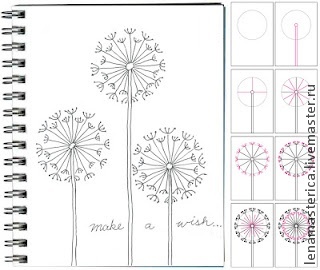
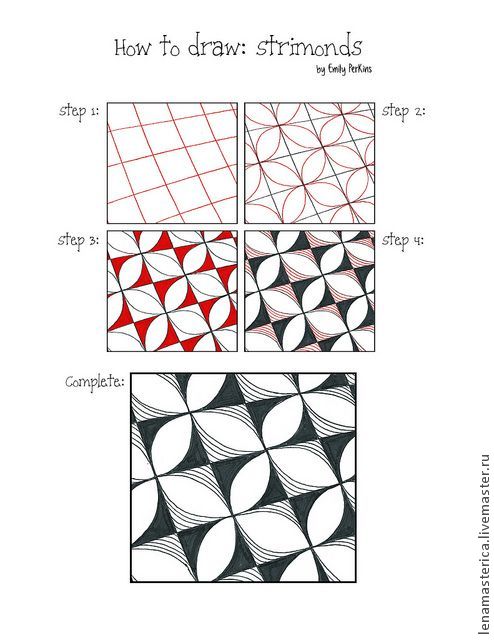
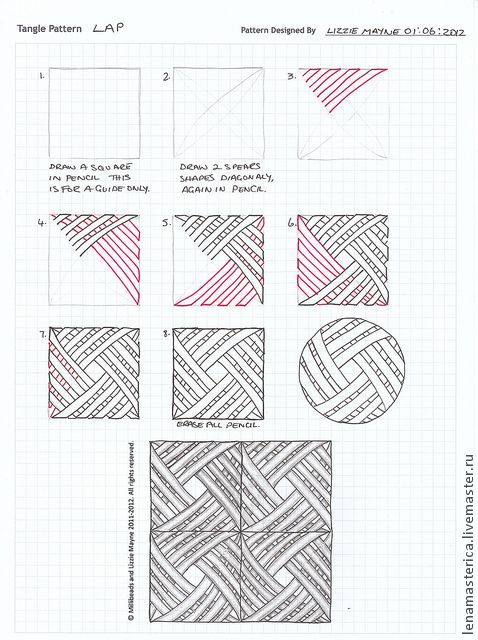
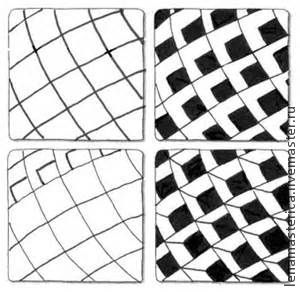
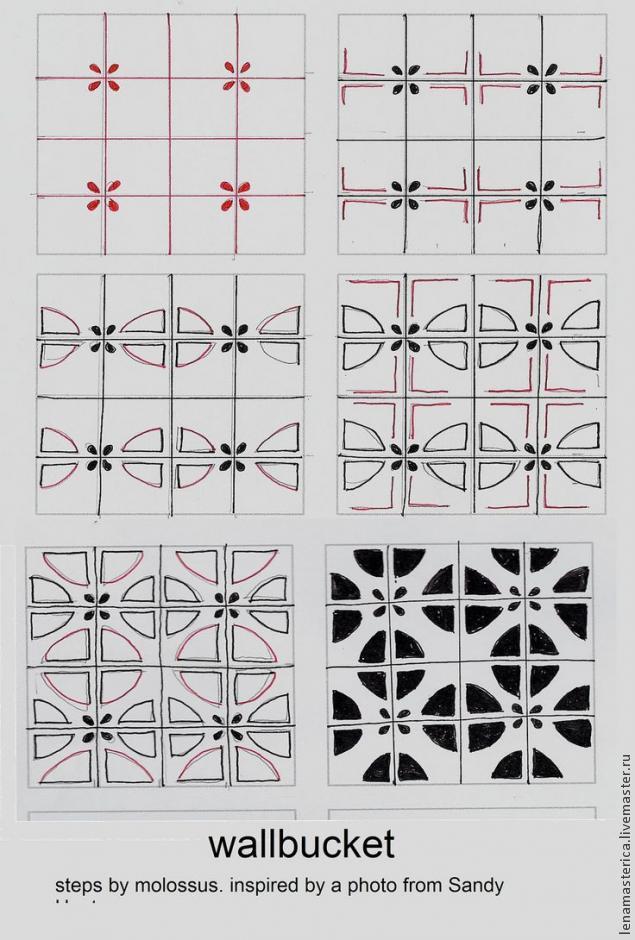
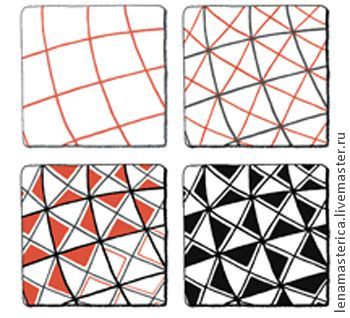
And now - my processes! I started this drawing from the bottom left corner:
.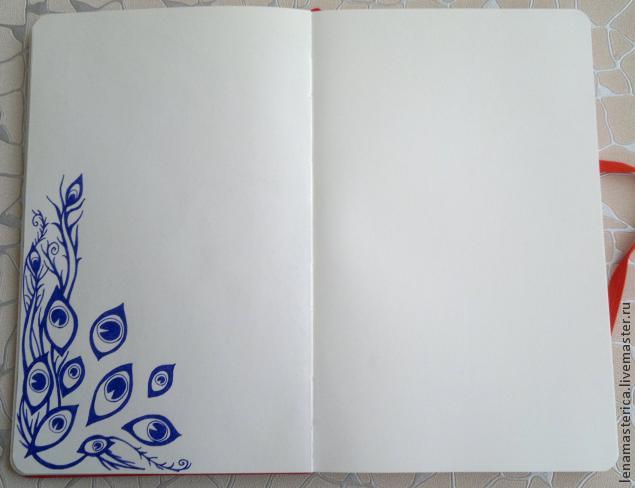
Then I wanted circles. It is easier to use a compass in this situation. But, since I didn’t have it, I simply circled containers of various diameters with a pencil. With a ruler and a pencil, I divided the circles into sections, so it is easier to fill them with patterns.
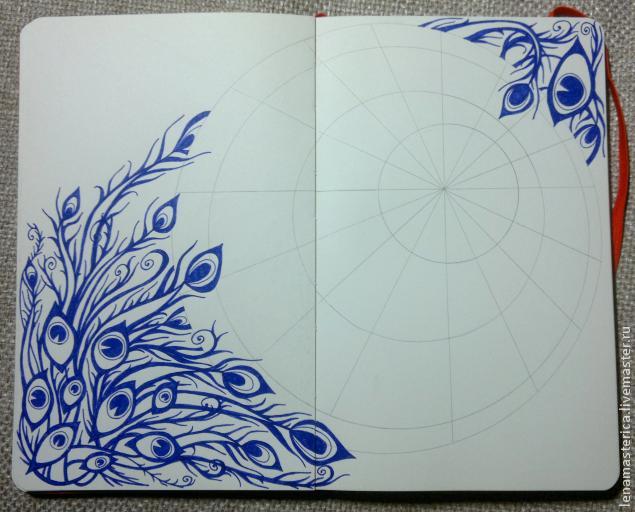
When all the borders have been marked with a pencil, you can begin to fill in the sections of the circle with various patterns. Started from the center.
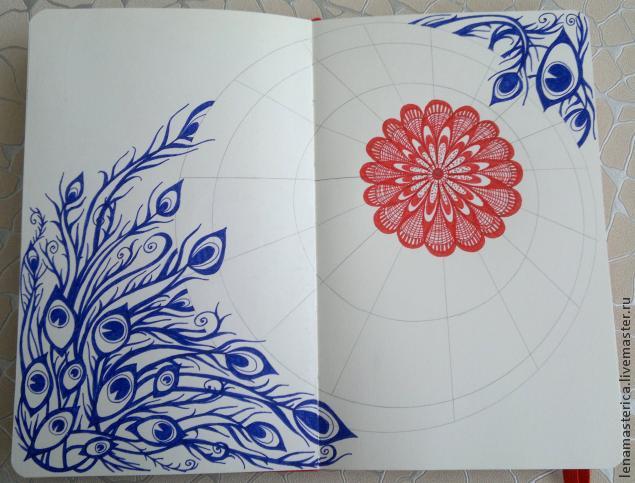
I continue to fill in the sections with various patterns.
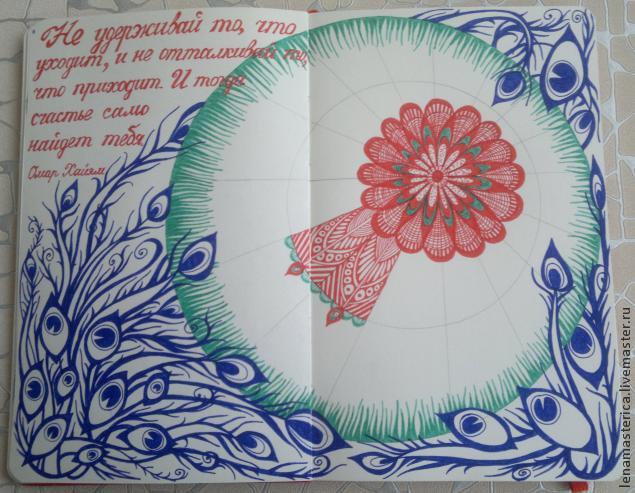
What patterns to fill in the following sections of the question does not even arise, you just start, the pen will draw by itself, as this is a very exciting process!
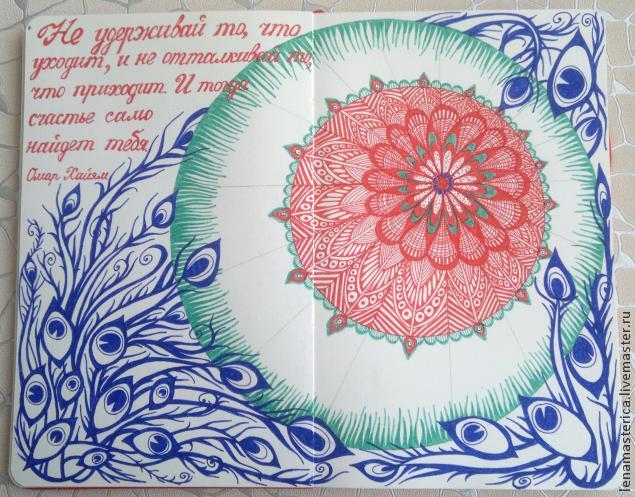
We are nearing completion, filling in the last sections of the circle with patterns.
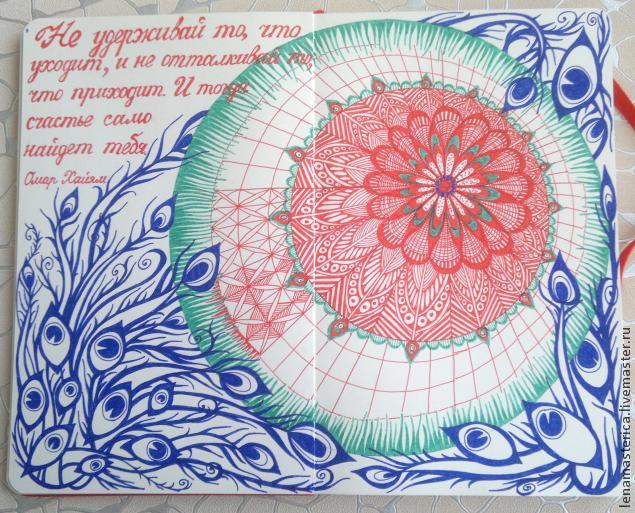
When the work is finished, gently erase the pencil lines with an eraser so that the work looks neat. Ready!
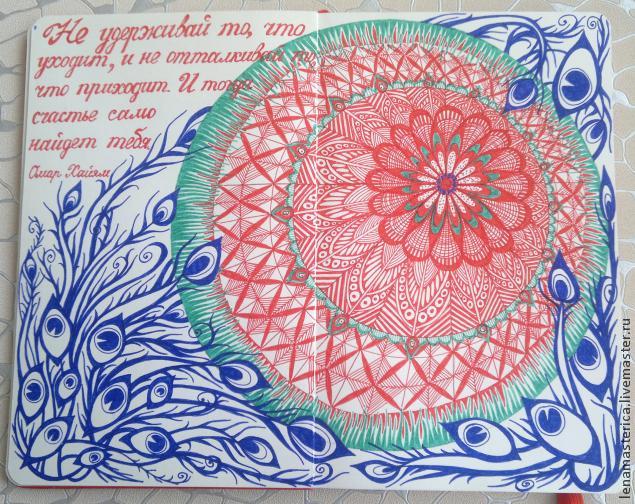
Text in the drawings, of course, is not necessary, but I thought of something like a book with interesting thoughts in pictures. Here are some more pages from it (and the drawing process):
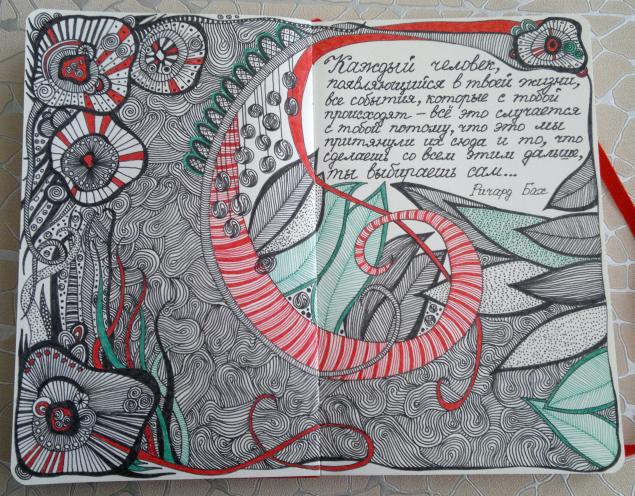
In this work, I started from the top corner. Abstract figures are drawn and filled with dots, lines, etc. all the same capillary pens.
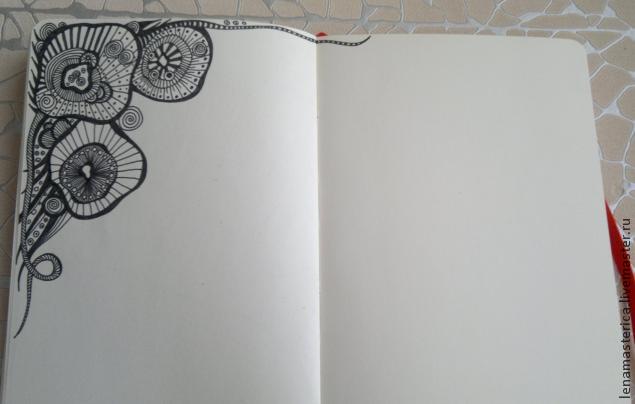
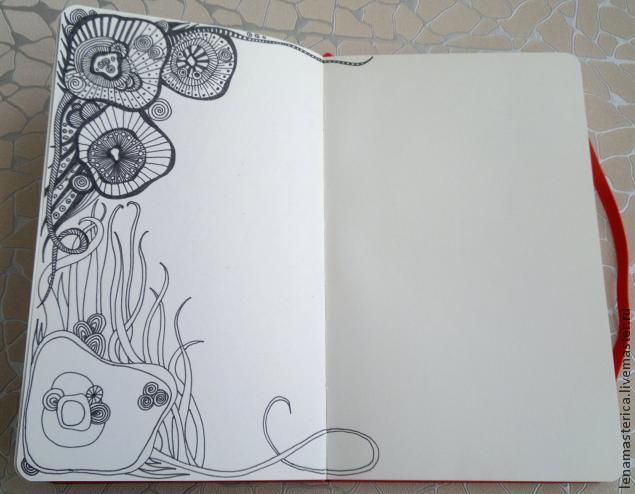
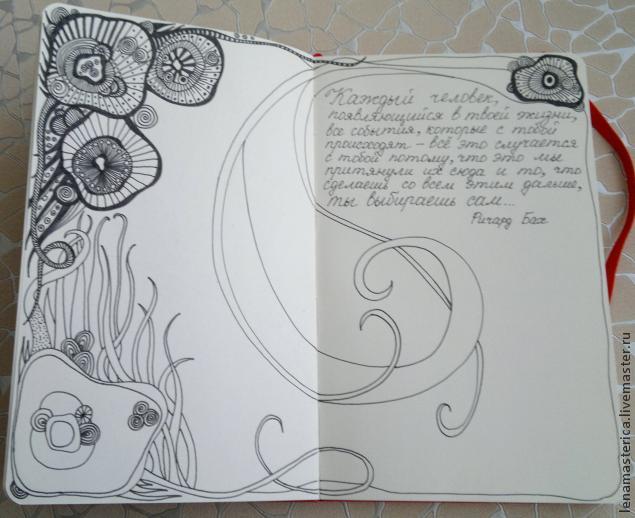
We complement the drawing with color accents.
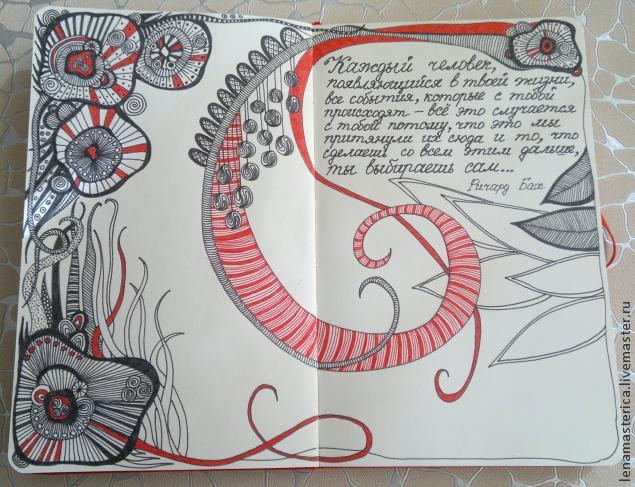
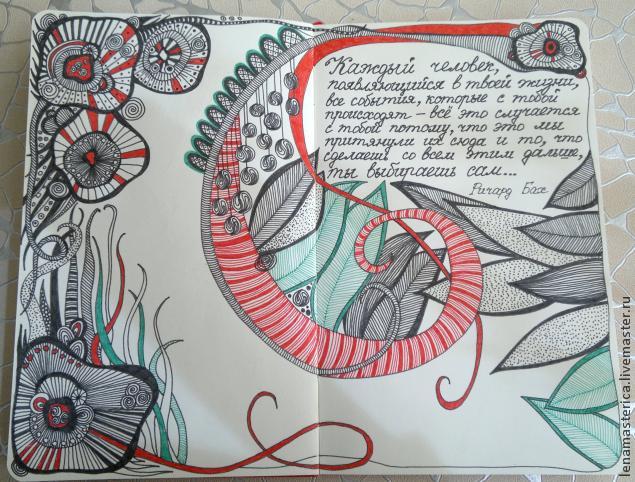
This Japanese-influenced drawing is drawn with thinner gel pens.
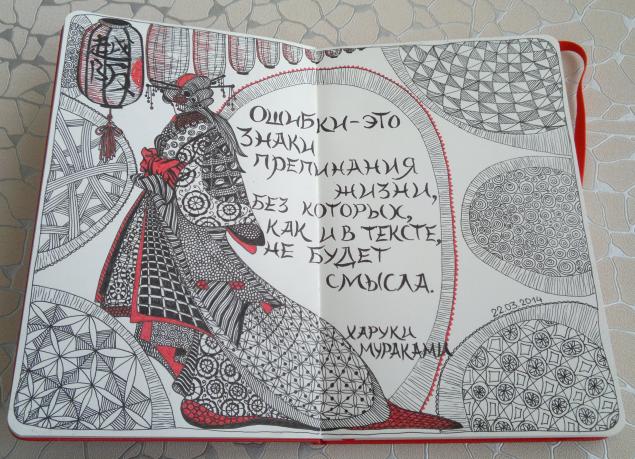
Started with a sketch:
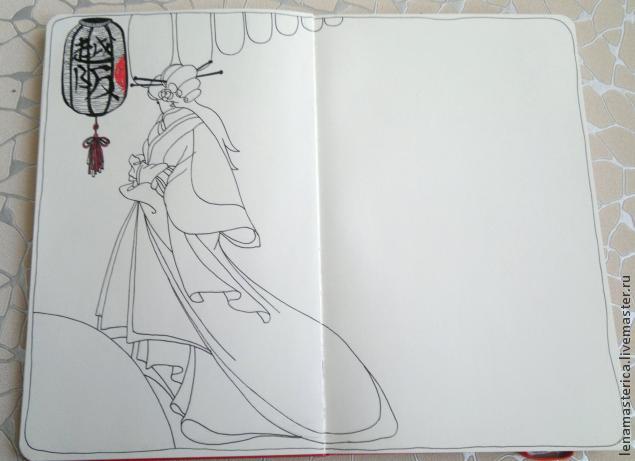
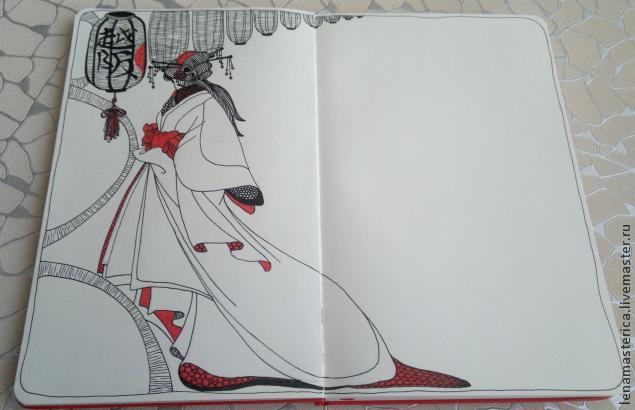
And again - capillary pens. Houses.
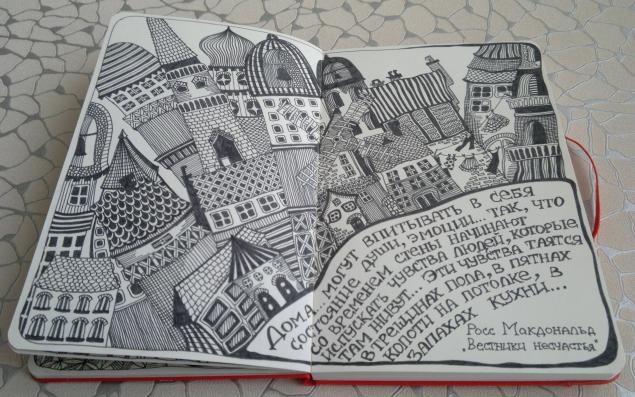
We act according to the above principle, first - the figures and the general plan, then - filling the figures with abstract patterns.
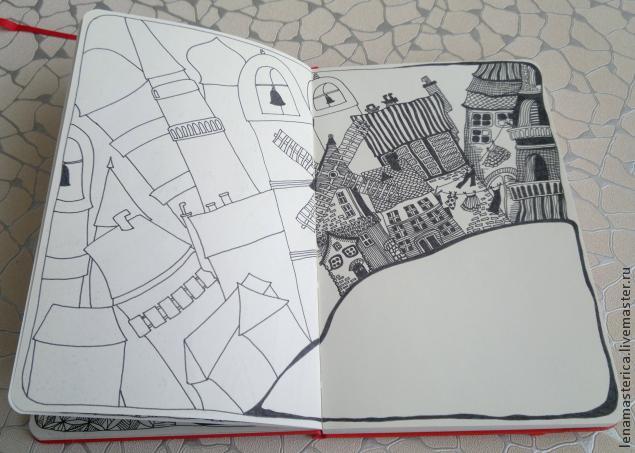
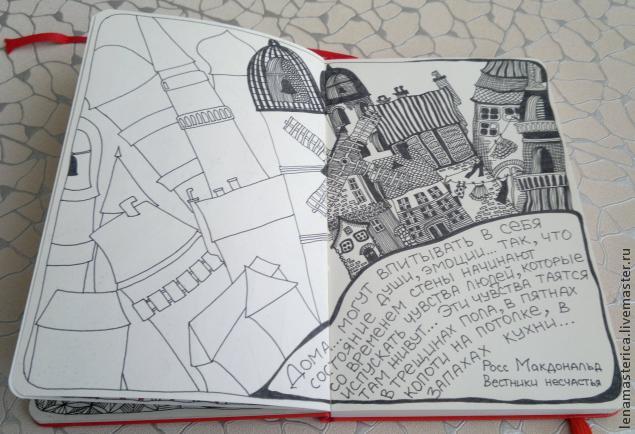
A green capillary pen and a black gel pen are involved here. The principle is the same, shapes and patterned filling.
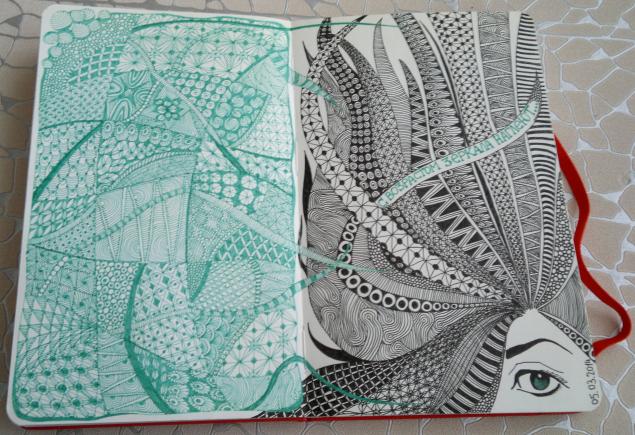
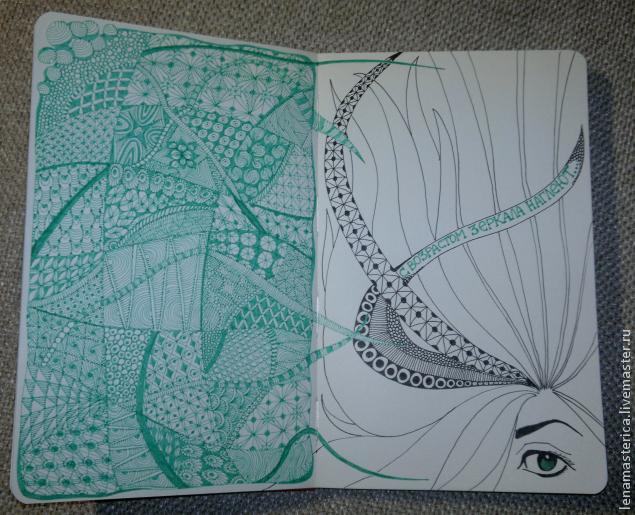
I want flowers :)
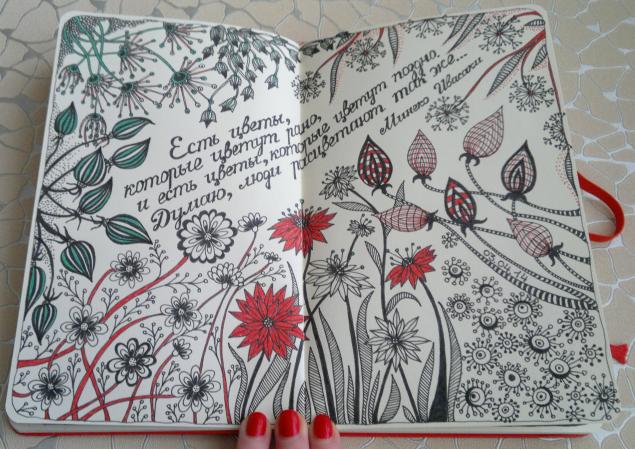
From all angles, I drew fantasy flowers that seem to tend to the middle, and filled them with various patterns using multi-colored pens.
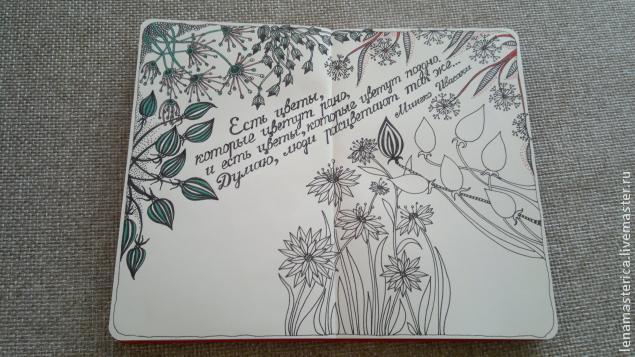
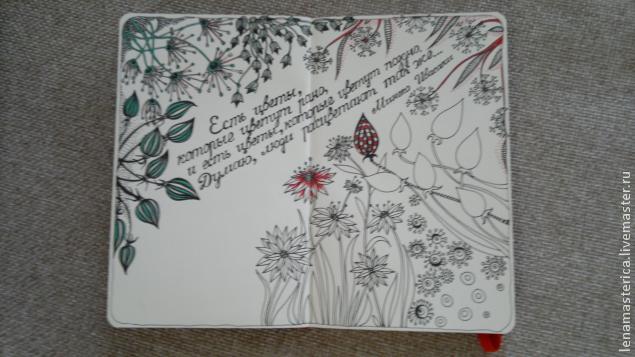
I hope it was interesting.
Have a nice day and good mood!
Sincerely, Elena



